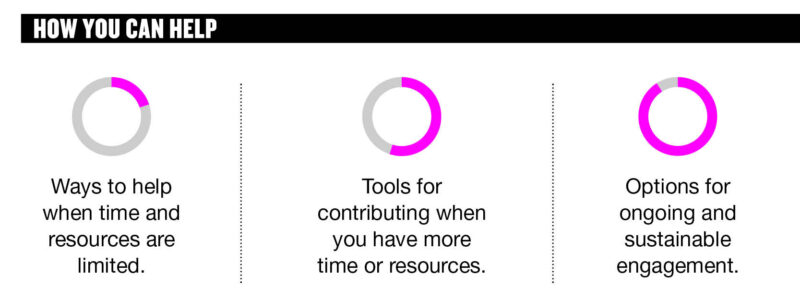By Jenn Wint
Environmental scientist and sustainability expert, Dr. Jonathan Foley shared that, “99% of climate change media is about the problem.” As a member of media there to cover the event, this statistic got me thinking right away. Foley addressed The Zero Waste Conference in Vancouver, BC earlier this month sharing his science-based climate solutions and strategies. He discussed the mind shifts and leadership requirements that will change the volume of CO2 emissions being put into the atmosphere every year. Foley’s climate narrative demonstrated the recovery required to reduce global emissions and regenerate nature to achieve circularity. While many of his slides showed the grim reality of climate change his optimistic outlook was hopeful and geared towards climate solutions. “80% of climate solutions available today are cheaper than what we’re doing now,” he explained. “I like cheap things. It means we can do more of them.” Foley emphasized the most crucial element in climate change is time. Moving the dial quickly is more valuable than developing technology and creating policies. As a global society, we need to get moving, making steady progress. Every year the graphs go up, we’re further from achieving the goals required to sustain ourselves.
Foley, Executive Director at Project Drawdown was a great choice to kick off the Zero Waste Conference as his optimism set the tone for solutions. The conference theme was Climate Action Through Circularity. According to the UN, ‘Circular economy aims to minimize waste and promote a sustainable use of natural resources, through smarter product design, longer use, recycling and more, as well as regenerate nature.’ As I listened to the knowledge and experience of the speakers, I heard a recurring theme: do less, use less, not the opposite as I have previously considered when it comes to climate change.
Dr. Ehab Sayed, Founder and Chief Evolution Officer at Biohm said, “nature is really quite simple,” while speaking on the panel, Building Circular Cities of Tomorrow. He spoke about allowing nature to lead innovation and nature-based solutions in the form of biomimicry. Geneviève Noël and T. Maginnis Cocivera, co-Founders of Mindful Architecture exemplified this concept sharing their project, the McMurray Métis Cultural Centre in Alberta which is designed to work with the climate, culture and offering of the land to re-establish a symbiotic relationship.
Afternoon sessions explored plastics pollution and textile waste. Expert designers and producers in the sustainable fashion industry highlighted the need for change sharing that globally, less than 1% of our garments are recycled. Fast fashion is a scary industry. Speakers Elisabeth de Gramont from Frank And Oak, Paul Long, President at ANIÁN and Andreanne Dandeneau and Jodi Benson from Anne Mulaire Design discussed moving beyond reducing harm and waste to using regenerative strategies. From upcycling to downcycling, these brands are actively seeking circularity in the fashion industry. According to earth.org, the average US consumer throws away 81.5lbs of clothes every year and the number of times a garment is worn has declined by around 36% in 15 years. Kelly Drennan Founding Executive Director of Fashion Takes Action said, “there’s no such thing as away when you’re throwing something away. There’s no ‘away.’”
Climate action is one of the globe’s most critical urgencies. The Zero Waste Conference made that abundantly clear. The good news is that there’s lots that individuals as well as large companies can do about it. What stuck out to me throughout the day was surprisingly simple, and the opposite of climate action. It’s inaction that will achieve a circular economy. If we buy less, consume less, waste less, wear less and so on, each person can lower their carbon footprint while saving money and benefiting their health, physical and mental. We can learn a lot from the simplicity of nature.
I left the Zero Waste Conference feeling inspired and hopeful. Climate change is often presented as an inevitable reality and a problem too large to confront. I’m comforted by the work of speakers like Denis Crevier and his team at Global Infrastructure Hub. I’m empowered by the passion and approach of Crystal Dreisbach, CEO at Upstream. As I made my way out of the conference, I stopped by the snacks table to grab a cookie for the road. The environmental impact of my own unconscious behavior became abundantly clear when I couldn’t find a napkin to wrap my take-home cookie. Zero waste and a circular economy won’t happen overnight, but we can start now.

![]() PUT your money towards sustainable fashion choices like those from Anne Mulaire
PUT your money towards sustainable fashion choices like those from Anne Mulaire
![]() LOOK into Upstream Community Action.
LOOK into Upstream Community Action.
![]() BUILD sustainably. Look at companies like Nexxi Building Solutions.
BUILD sustainably. Look at companies like Nexxi Building Solutions.
After a year of chaos and uncertainty, our mission for ISSUE 03 of RIPPLE OF CHANGE is to spark inspiration in our readers. There was a lot of talk of coming together, acting in solidarity for our peers, and putting others before ourselves to overcome the challenges put before us. Now, we put that to the test.
Order your copy of Issue 03 today!
